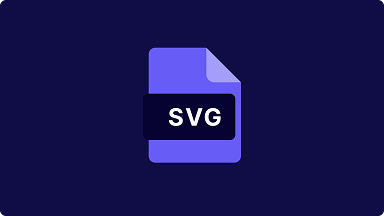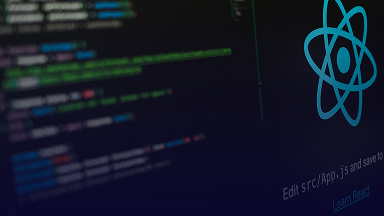Mobile app developers often face a choice between two leading technologies – React Native and Flutter. Both frameworks are used to build Android and iOS apps, but each comes with its own unique features. Let’s take a closer look at when each framework shines.
React Native has long relied on the so-called “JavaScript bridge,” which sometimes caused slight UI delays. However, since version 0.78, with the introduction of the new architecture (Fabric, TurboModules), React Native has made a big leap forward and now offers performance close to native. For 95% of applications, React Native is more than sufficient. It's used in apps like Discord, Burger King, and Coinbase.
Flutter stands out with exceptional performance. It compiles to native machine code (AOT – Ahead of Time), ensuring smooth operation, especially for complex interfaces and advanced animations. It’s the best choice for apps requiring 3D animations, games, or when you need full control over performance. Notable apps built with Flutter include Google Ads, BMW, eBay Motors, and Alibaba.
React Native, a more mature platform, offers a richer ecosystem and a large, active community. There are plenty of ready-to-use libraries and components, and the community support helps in solving issues faster. It’s also worth noting that React Native originates from React — a popular web development library — which means many of its early-stage bugs have already been resolved.
Flutter, although younger, has gained massive popularity and now surpasses React Native in GitHub stars. Its ecosystem is growing rapidly, with many popular packages regularly maintained by the community and Google.
React Native is a natural choice for developers familiar with JavaScript and React. It's a great option for web developers looking to expand into mobile development.
Flutter uses Dart, a language much less widespread than JavaScript. It requires extra time to learn both the language and Flutter's unique widget system, which may be unfamiliar to many developers.
React Native uses native UI components, which means apps look and behave like standard Android or iOS apps. It’s ideal when you want a native look and feel on both platforms. If you're aiming for more advanced visual features, you can use react-native-skia for complex UI effects.
Flutter renders UI elements using the Skia engine, which offers greater flexibility but might result in a less native appearance. It's perfect when you want full control over the interface and consistent visuals across all platforms.
React Native, developed by Meta, is used internally to build their own apps. It has strong support in the JavaScript and React ecosystems. While its multi-platform capabilities are somewhat limited (despite the existence of React Native Web), it remains a solid choice for mobile-focused projects. Thanks to Microsoft’s involvement, React Native Windows is also being developed, which may be valuable for specific use cases.
Flutter, backed by Google, has ambitious plans. Beyond mobile apps, it is also targeting web, desktop, and embedded devices. It's a great option for cross-platform development from a single codebase. Flutter Web still faces some performance issues (similarly to React Native Web), but it's improving with every release.
To better illustrate the differences, here are some real-world scenarios:
React Native, when used with Expo, allows you to update your app without releasing a full version to app stores (Google Play, App Store). This means you can push quick fixes and JavaScript code updates almost instantly. However, this only applies to the JavaScript layer — any changes to the native code still require a traditional store update.
Flutter doesn’t natively support over-the-air (OTA) updates, but this limitation can be overcome with Shorebird — a tool built specifically for OTA updates in Flutter apps. It enables fast logic updates and bug fixes without needing to republish the app. Shorebird updates the Dart code while maintaining Flutter’s performance. As with Expo, it cannot modify native code or apply changes that require recompilation.
| Feature / Module | React Native (workdays) | Flutter (workdays) | Comment |
|---|---|---|---|
| Authentication (email + social login) | 2–3 | 3–4 | More out-of-the-box plugins for React Native |
| Navigation + routing | 2 | 2–3 | Faster in React Native with Expo Router; Flutter requires GoRouter setup |
| Data list + filtering | 2 | 2 | Comparable – depends on state management approach |
| Simple form with validation | 1–1.5 | 1.5–2 | React Hook Form vs Flutter’s Form and TextFormField |
| UI for both platforms (Android + iOS) | 1 | 0.5 | Flutter wins with consistent UI out-of-the-box |
| Animations + microinteractions | 2–3 | 1–2 | Flutter = smoother and quicker to implement |
| REST API integration | 1–1.5 | 1–1.5 | Comparable (Axios / http, dio) |
| Push notifications (Firebase) | 1 | 1–2 | More stable plugins in React Native (e.g., react-native-firebase) |
| App Store / Google Play release | 1 | 1 | Comparable |
⏱️ Total time estimate for a simple MVP:
📌 Takeaways:
React Native: A great choice for teams experienced in JavaScript and React. Perfect for projects with short time-to-market, cost-effective development, and strong native integration needs. With its new architecture, React Native delivers very high performance, often comparable to native apps.
Flutter: Ideal for projects that demand complete UI control, smooth animations, and cross-platform development from a single codebase. Backed by Google and powered by its own rendering engine, Flutter is great for long-term and large-scale projects.
Ultimately, the decision depends on your project needs, team skills, and long-term goals. Both Flutter and React Native are powerful tools — each with a different philosophy, but both capable of delivering modern, fast, and scalable apps.
Which framework is right for you? If you need help choosing or building your next app — reach out to us! 😉





